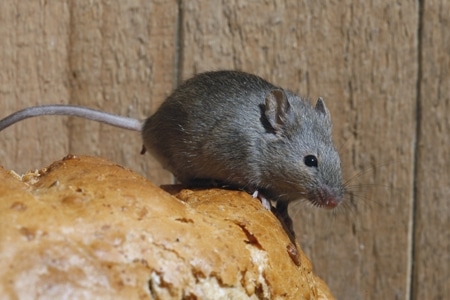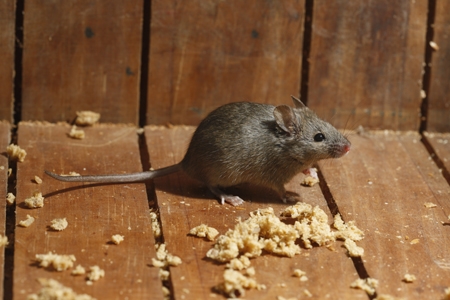Active Seasons



House Mouse Appearance and Size Facts
While they’re a common house pest throughout Florida, house mice are prone to being major health risks for the diseases they can carry. This is why house mice are a problem that no homeowner should have to deal with. However, with the right resources and knowledge, you can be the one to ensure your house mouse infestation is as good as gone.
House mice are typically round-shaped with dusty gray fur and whitish bellies. On average, house mice range anywhere between two and a half to four inches long. They have large ears, pointed muzzles, four legs, and firm tails with little to no fur on them.
Identifying House Mice From Other Rodents
Mouse mice can be best distinguished from other rodents based on their appearance. For example, the house mouse’s nose is triangular in comparison to a rat’s more rounded nose. House mice are also usually smaller in size than rats and other rodents. However, if you need help determining which rodent you just saw scuttling through your Florida home, a pest control professional can help.
We provide house mice control in the following locations and their surrounding areas:

Behavior and Habitat of House Mice
As social creatures, house mice organize themselves into hierarchies, with one male dominating the others in the colony. With their excellent climbing skills and their ability to jump up to a foot high, these pesky critters are constantly on the hunt for food to nibble on, feeding mostly at night. Especially when searching for food throughout a home, mice can contaminate food and food preparation surfaces and spread diseases. Additionally, many mice carry fleas and can attract other pests and predatory wildlife, including snakes. In some instances, a mouse may chew on electrical wiring, creating an electrical hazard in a building.
Although they can survive outside, house mice tend to enjoy the warmth and shelter of indoor structures when seeking new habitats. Typically establishing a territory of 30-50 feet, house mice like dark, secluded areas and often build nests from packing materials, paper products, and other similar man-made or natural materials. Being hidden from sight more often than not, Florida homeowners should be wary about a potential infestation, even if they only see one mouse or just see a few indicators of a mouse problem without seeing a mouse itself.

Signs of Infestation of House Mice
Throughout your home, you can find multiple indications that you’re dealing with a house mouse infestation. These factors include but are not limited to, finding the following:
- Gnaw marks
- Droppings
- Rub marks
- Tracks
- Burrows
- Runways
- Damaged goods and food packaging
There’s also the chance you will see a house mouse around your Florida home, or hear one running or squeaking in your walls. Even if you see or hear only one mouse, that doesn’t necessarily mean there aren’t more hidden away.

Tips for Prevention of House Mice
Since house mice feed on food and crumbs, it is best to fully seal all food packaging and keep food stored away at all times. In addition to this, clean up any countertops, tables, chairs, floors, and other surfaces to avoid leaving any food crumbs or remnants behind to potentially attract house mice.
To prevent entry of rodents and other pests, seal any gaps around the outside of your home. Mice can get into any gaps larger than a quarter of an inch, so don’t neglect sealing up even the smallest gaps around pipes and wiring.
Getting Rid of House Mice
Getting rid of house mice in your Florida home doesn’t have to be a solo effort. While there are ways you can try and prevent the entry of mice, nothing replaces the efficiency and effectiveness of going to professional pest control services for help.
With professional pest control services, you can rest easy and not worry about doing the dirty work yourself. Rodent control professionals, like those at Hulett, can help identify and assess a rodent infestation, eliminate mice with a range of solutions suitable for your home, and help you prevent future rodent infestations.
Effective House Mouse Control Solutions
To tackle a house mouse infestation in your Florida home or business ASAP, just call Hulett! With green pest control and prevention services, we not only strive to eliminate rodents now but also prevent your infestation from returning. Request our Florida house mouse control services today by giving our team a call or scheduling your free inspection online. We even offer weekend and evening services, so you don’t have to live with unwanted guests for long.


